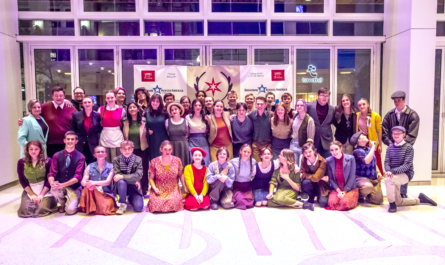In retrospect, this past year has been full of challenges. Masks became another thing to remember along with the car keys. Events and vacations were canceled. Self-isolation decreased the number of cases but increased loneliness and mental health issues. Over two and a half million people have died worldwide and more than 500,000 people in the USA have died from COVID-19.
This month marks a year since Sanpete county became directly affected by the coronavirus pandemic. On March 13, NS administration notified students and teachers that they would not go back to in-person learning, starting school from home instead. No one expected this unfamiliar “coronavirus” to have such an impact on the year to come.
“At this point last year, I don’t really think I thought it was going to become the pandemic that it did, and I certainly didn’t think that it would interrupt our lives the way it did,” said Catherine Carney, Language Arts teacher at NS. “I was constantly watching it, but I kept thinking it was ‘over there’–– it wasn’t going to come to Sanpete County.”
In March 2020, COVID-19 was declared a pandemic. And eventually, it did come to Utah and Sanpete County.
During the lockdown last Spring, everyone had some extra time on their hands, providing the opportunity to develop new skills.
“I learned many things last spring,” said NS sophomore Janessa Dyches. “I learned how to cut and edit audio for videos. I also have learned many things about history in the past year from just getting bored and studying people for fun.”
It ended up that the entire last quarter of the 2019-20 school year was online. In the fall of 2020, in-person schooling began again, with added restrictions and responsibilities.
“I was so happy to come back in person, like I was just: ‘I will wear a mask, I will wear whatever you need so that I can be back around people,’” Carney said.
For some, going back to school made life almost normal. Others, however, are still dealing with challenges brought about by COVID. Carney hasn’t seen her husband since December 31 of 2019, since he is in Kahsakstan for work. NS teacher Sterling Whipple has also been separated from his spouse as a result of COVID.
“My wife is high risk and in an attempt to protect her from me, who works in a public education system, I’ve actually sequestered myself to my own part of the house,” Whipple said. “I live in a different room than my wife does, basically. And that’s probably been the worst. I don’t even get to hug my wife.”
Whether it is a spouse, grandparent, or friend, missing people seems to be a shared effect of the coronavirus pandemic.
“The biggest challenge for me this year has been not being able to travel and see family ––and not seeing people just in general,” Dyches said. “I know some people who come to school in person miss their friends who are doing school at home online.”
Another difficulty brought about by covid is the general disruption of everyday activities that no one used to give a second thought about. For example, it has been harder to participate in sports, especially team and community sports.
“I’m still waiting for things to clear up enough that I can go play some racquetball and some tennis without having to worry about contributing to a global pandemic that has killed more people than World War II. So yeah, It’s affected me,” Whipple said.
Wearing face masks and sanitizing have become additions to the daily routine. With this comes more things for people to remember as they head out the door.
“I miss the ability to just go without thinking,” Carney said. “Like ‘do I have a mask, etc.?’ It’s kind of like having a small child, ‘do I have all of the essentials I need for the small child?’ instead of just being able to grab the purse and go.”
Everyone misses something; whether it is family or normal routines, the current pandemic has taken something away from everyone.
Some people, Whipple included, find it disconcerting that after all this time, after all these deaths, there are still people who don’t believe that covid exists––or who are not participating in preventative measures such as mask-wearing.
“I’m tired of hearing about people who still think COVID-19 is a hoax,” Whipple said. “I’m tired of hearing about people who go to theaters without a mask and sneeze without covering their mouth; that’s what I’m tired of hearing about. Covid news, and learning about the developments of the strains and the vaccines, that’s still interesting because that is important information that we should all care about hearing. But yeah, I’m tired of the drama of the people. The drama of the virus I’m okay with. It’s not nearly as taxing to me as the drama of people.”
Over 611,000 covid vaccines have been administered in Utah, which has contributed to the downward trend of cases in the state. COVID-19 is more understood and more under control than it was a year ago, but it’s still prevalent and won’t be disappearing on its coronaversary of reaching Utah.
“For me personally, I was just like everyone else, hoping that we would be able to go back to our usual way of living this spring,” Dyches said. “But in some sense, we all already knew that it wouldn’t be that easy for us to get rid of covid.”




